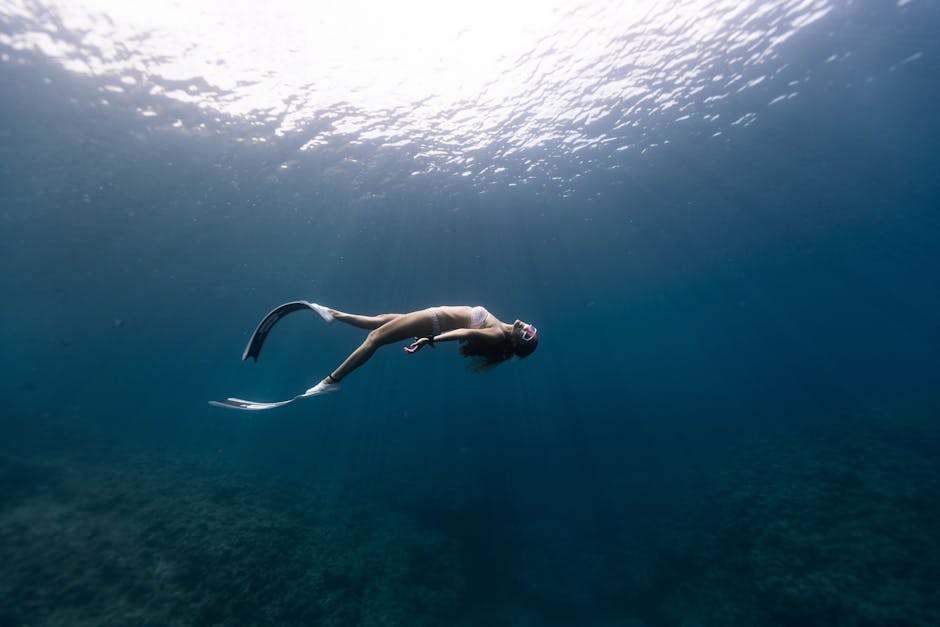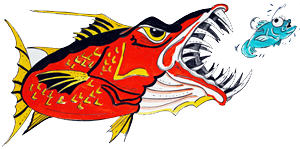Introduction to Catch-and-Release Fishing
Catch-and-release is not just a technique—it’s a responsibility. When you’re out on the water, angling for that big one, choosing to let the fish swim away does more than give you a good story. It supports a thriving marine habitat. Here’s the deal: you hook the fish, you reel it in, and with a careful hand, you release it back into the wild. Simple, right? More than just a moment’s choice, catch-and-release is a practice that helps maintain fish populations and keeps the ecosystem in check. It’s not about the size of the catch, but the health of the ocean we love. So, next time you feel the tug on your line, remember: a good fisherman respects the sea, and a thriving sea keeps the fish biting.

The Importance of Marine Habitat Conservation
Marine habitat conservation is crucial for keeping our oceans alive. Every action we take, from the fish we catch to the plastic we avoid tossing into the sea, matters. Catch-and-release plays a key part in this effort. It’s simple; when we catch fish and gently release them back into the water, we give them a chance to grow, breed, and maintain the species’ population. Healthy fish populations keep the food chain in check and ensure our oceans stay vibrant and full of life. It also means there will be plenty of fish for future generations of anglers to enjoy. It’s more than a sport; it’s a way to respect and safeguard the underwater world we love so much.
Principles of Catch-and-Release Fishing
Catch-and-Release fishing is all about respect for the aquatic world. The idea is simple: you catch the fish, handle it with care, and then let it go back to its home. First off, use barbless hooks or pinch the barbs on your hooks flat – it’s way easier to remove the hook and less stressful for the fish. When you reel in your catch, keep the fight short. This avoids exhausting the fish, which can be deadly, especially in warm water. Always wet your hands before handling the fish, so you don’t remove their protective slime. And never let the fish flop around on deck. Once you’ve admired your catch, gently release it back into the water. Giving it support and allowing it to swim away on its own promotes recovery. This practice keeps the populations healthy and fishing spots abundant for future anglers. In a nutshell, Catch-and-Release done right maintains the balance in our waters—it’s a win-win for you and the fish.
The Benefits of Catch-and-Release to Marine Life
Catch-and-release isn’t just a sporting gesture; it’s a crucial practice for marine conservation. When you reel in a fish and set it free after that victorious photo, you’re giving it another shot at life. This act has a domino effect on the ecosystem. First, it maintains fish populations. More fish in the sea means species can keep reproducing and the genetic diversity stays healthy. This is essential because it helps the marine community withstand diseases and adapt to changes in the environment. Next, catch-and-release improves the overall health of the fish species. When you release young and healthy fish, you’re ensuring that the strongest and fittest survive and thrive. This can lead to bigger, more robust populations as these prize catches pass on their hearty genes to the next generation. Additionally, catch-and-release has an educational angle. Fishers learn to respect the water’s inhabitants and often pick up a thing or two about fish behavior and habitat, making them better, more environmentally conscious anglers. So, when you think about it, the thoughtful release of that fish is more than just a kind act; it’s a ripple that turns into a wave of benefits for our marine life.
Techniques for a Successful Catch-and-Release
To make sure the fish swim off healthy and ready to thrive, you gotta handle them with care. First, use barbless hooks or flatten the barbs on your hooks to make releasing fish easier and less harmful. Also, get your hands wet before touching the fish; this protects their slime coat that wards off infections. If you can, remove the hook while the fish is still in the water. When that’s not an option, use a net made of rubber, not knotted nylon, to avoid damaging the fish’s skin.
Keep the fish horizontal if you have to lift it out; vertical hanging can damage their internal organs. Be quick about it, too. The longer you take snapping photos or admiring your catch, the higher the risk the fish won’t make it. Snap the photo while the fish is in the water if possible. Use a pair of needle-nose pliers or a hook removal tool to make the unhooking swift.
If the fish is swallowed the hook or you can’t get it out, better to cut the line as close to the hook as possible. Often, the hook corrodes away without causing serious damage. Once the hook is out or cut, gently place the fish in the water, supporting its mid-section and tail until it swims off under its own power. If it’s sluggish, move it back and forth to get water moving over its gills, but never shake it or force it.
By following these catch-and-release techniques, you’re not just fishing, you’re helping maintain a robust marine habitat. And that’s something to be proud of.
Common Misconceptions about Catch-and-Release Fishing
Catch-and-Release fishing isn’t just letting the fish swim away after a catch. Some people think it hurts more than it helps. Not true. Done right, it promotes healthy fish populations. First off, folks often believe it injures fish seriously, leading to death. But using proper techniques, the survival rate can be pretty high. Another myth? That fish caught and released can’t fend for themselves anymore. Actually, these fish typically resume normal behavior swiftly. Anglers need to know this isn’t an all-harm-no-good deal. With the right methods and a little care, Catch-and-Release can sustain our marine buddies for the future.
Role of Anglers in Marine Ecosystem Health
Anglers, grab your rods with a clear conscience knowing you play a vital role in marine ecosystem health. Catch-and-release isn’t just a sport; it’s a conservation effort that helps sustain fish populations. When you practice it, you’re giving fish a shot at dodging predators, finding food, and reproducing. Each fish returned is a victory for the ecosystem. But there’s a but: do it right. The way you handle fish matters. Use barbless hooks, handle fish with wet hands, and avoid taking them out of the water for long. These simple steps mean you’re not just fishing, you’re stewarding the seas. Every throwback counts. Keep at it, and watch our marine habitats thrive.
Legal and Ethical Considerations of Catch-and-Release
Catch-and-release isn’t just tossing a fish back into the water; it’s about ensuring the fish lives to swim another day. Legally, you might need to release a fish due to size, species, or season restrictions. Ethically, it’s about respecting the marine habitat and contributing to its sustainability. How you handle the fish, from the type of hook you use to the way you release it, can mean life or death. Barbless hooks and circle hooks often result in less harm to the fish, increasing its survival chances after release. Remember, the goal is to minimize stress and injury to the fish. So, handle fish wet and with care, removing the hook quickly and submerging it with support until it swims off powerfully. Let’s keep our marine habitats thriving by being responsible anglers.
Long-term Impact of Catch-and-Release on Marine Habitats
Catch-and-release practices play a sizable role in sustaining healthy marine ecosystems. When done correctly, it ensures many species keep thriving. This method can significantly reduce overfishing effects, allowing fish populations to replenish. Studies have shown that areas where anglers consistently apply catch-and-release see more stable and diverse aquatic communities. It’s like giving fish a second chance to grow, reproduce, and maintain their role in the underwater world. Sure, there’re debates about the stress it causes to fish, but improvements in techniques are making catch-and-release kinder to our scaly friends. A thriving marine habitat is a complex puzzle and catch-and-release is a piece that helps maintain the delicate balance below the waves.
Conclusion: The Future of Sustainable Fishing Practices
Catch-and-release isn’t just a feel-good policy, it’s a strategic move for the health of our oceans. Moving forward, it’s clear sustainable fishing practices are not just a choice but a must. This approach balances the thrill of fishing with the responsibility toward marine populations. As we commit to responsible angling, we support a diverse, flourishing underwater world. The future of fishing relies on the actions we all take, from the lone fisherman to major commercial fleets. By prioritizing the health of fish stocks and their habitats, we ensure that the joys of fishing can be shared for generations. No more taking with reckless abandon—it’s time to give back and secure the legacy of our oceans.

Leave a Reply